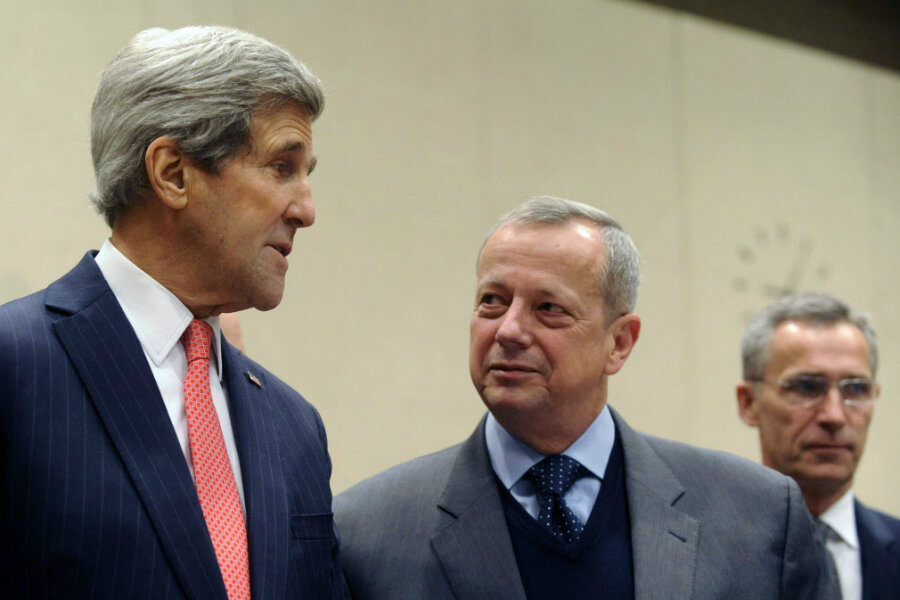Is US goal to 'destroy' Islamic State? President Obama and US envoy disagree.
Loading...
President Obama has pledged that the US military will “destroy” the Islamic State, but retired Gen. John Allen, who has been appointed Washington’s special envoy on the matter, says that perhaps “destroy” is a bit ambitious and, in any case, it is not quite what the president meant.
“I don’t believe that the president intended to imply the ‘annihilation’ ” of IS, Mr. Allen, who is charged with building a global anti-IS coalition, said in an interview with the German news magazine Der Spiegel. “That is far beyond our thinking in this regard.”
Indeed, “destroy” is a “very specific” military term, says Jessica Lewis, research director at the Institute for the Study of War and a former Army intelligence officer who served in Iraq and Afghanistan.
As outlined in an Army field manual, it’s “a tactical mission task that physically renders an enemy force combat ineffective.” In other words, Ms. Lewis adds, “it is to damage it so badly that it cannot perform its primary function.”
There are other military terms that Pentagon strategists use – to include “degrading” and “dismantling,” for example – that offer possibilities that are less ambitious than “destroying.”
Still, Mr. Obama appeared to emphasize his intent to annihilate the group as recently as last month while speaking with hundreds of troops at Fort Dix, N.J.
“Make no mistake,” he told the soldiers. “Our coalition isn’t just going to degrade this barbaric terrorist organization. We’re going to destroy it.”
But if the US is at war with the Islamic State, then isn’t “destroying” the terrorist group the logical goal? Why aim for anything short of that?
Allen offered his own thoughts as to why he believes that the goal of “destroying” IS might not be the best choice.
“Annihilation requires a great deal of investment, resources, and time,” he told Der Spiegel. He then took another tack.
“The defeating, dismantling, and degrading” of IS will result in “ultimately destroying the idea.”
Destroying the idea of IS “is the long-term objective,” he said.
So what is the difference between this and destroying the organization itself?
“We can only destroy [IS] when we destroy the attractiveness of the brand itself,” Allen said. “When you can defeat the idea, then you have destroyed the organization.”
This involves the need “not only to expose [IS] for the darkness that it is, but also to celebrate the values within countries that help defeat the attractiveness of [IS],” Allen said. “We want to build capacity in countries in the region and the coalition to reduce its attractiveness for recruiting.”
Currently, the Islamic State consists of three key parts, Lewis says: a caliphate that controls physical territory inside Iraq and Syria, a military “that behaves like an army in a ground war," and its own troops that can revert back to “less formal styles of warfare” if the IS military is destroyed.
“What we are destroying is a very important question,” Lewis says. “The mission to ‘destroy’ is actually a huge task.”







